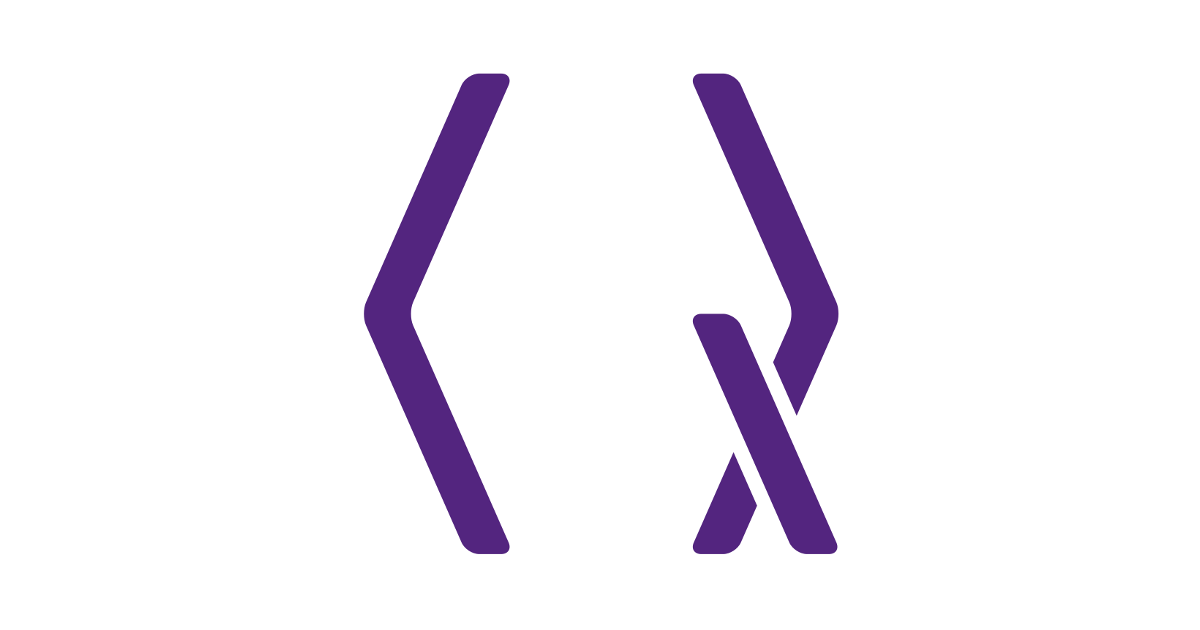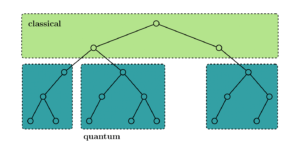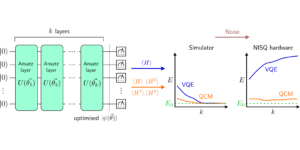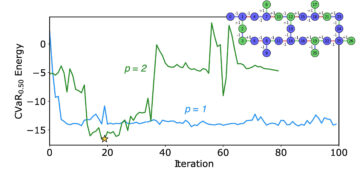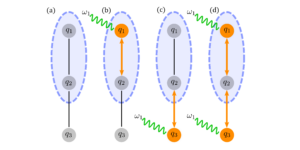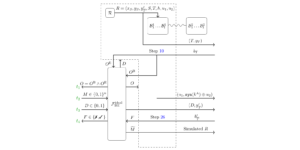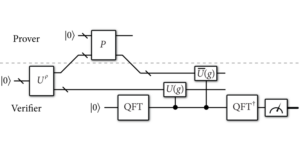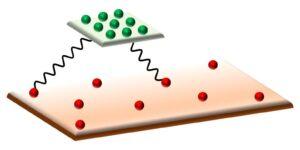1Computational Science Initiative, Brookhaven National Lab, Upton, NY, 11973, USA
2Center for Theoretical Physics, Department of Physics, University of California, Berkeley, CA 94720, USA
3Department of Physics, University of California, Santa Barbara, CA 93106, USA
Find this paper interesting or want to discuss? Scite or leave a comment on SciRate.
Abstract
We introduce a novel model of multipartite entanglement based on topological links, generalizing the graph/hypergraph entropy cone program. We demonstrate that there exist link representations of entropy vectors which provably cannot be represented by graphs or hypergraphs. Furthermore, we show that the contraction map proof method generalizes to the topological setting, though now requiring oracular solutions to well-known but difficult problems in knot theory.
► BibTeX data
► References
[1] Shinsei Ryu and Tadashi Takayanagi. “Holographic derivation of entanglement entropy from AdS/CFT”. Phys. Rev. Lett. 96, 181602 (2006). arXiv:hep-th/0603001.
https://doi.org/10.1103/PhysRevLett.96.181602
arXiv:hep-th/0603001
[2] Ning Bao, Sepehr Nezami, Hirosi Ooguri, Bogdan Stoica, James Sully, and Michael Walter. “The Holographic Entropy Cone”. JHEP 09, 130 (2015). arXiv:1505.07839.
https://doi.org/10.1007/JHEP09(2015)130
arXiv:1505.07839
[3] Sergio Hernández-Cuenca. “Holographic entropy cone for five regions”. Phys. Rev. D 100, 026004 (2019). arXiv:1903.09148.
https://doi.org/10.1103/PhysRevD.100.026004
arXiv:1903.09148
[4] David Avis and Sergio Hernández-Cuenca. “On the foundations and extremal structure of the holographic entropy cone” (2021). arXiv:2102.07535.
arXiv:2102.07535
[5] Ning Bao, Newton Cheng, Sergio Hernández-Cuenca, and Vincent P. Su. “The Quantum Entropy Cone of Hypergraphs”. SciPost Phys. 9, 067 (2020). arXiv:2002.05317.
https://doi.org/10.21468/SciPostPhys.9.5.067
arXiv:2002.05317
[6] Nicholas Pippenger. “The inequalities of quantum information theory”. IEEE Transactions on Information Theory 49, 773–789 (2003).
https://doi.org/10.1109/TIT.2003.809569
[7] Noah Linden, František Matúš, Mary Beth Ruskai, and Andreas Winter. “The Quantum Entropy Cone of Stabiliser States”. LIPIcs 22, 270–284 (2013). arXiv:1302.5453.
https://doi.org/10.4230/LIPIcs.TQC.2013.270
arXiv:1302.5453
[8] Michael Walter and Freek Witteveen. “Hypergraph min-cuts from quantum entropies”. J. Math. Phys. 62, 092203 (2021). arXiv:2002.12397.
https://doi.org/10.1063/5.0043993
arXiv:2002.12397
[9] Sepehr Nezami and Michael Walter. “Multipartite Entanglement in Stabilizer Tensor Networks”. Phys. Rev. Lett. 125, 241602 (2020). arXiv:1608.02595.
https://doi.org/10.1103/PhysRevLett.125.241602
arXiv:1608.02595
[10] Ning Bao, Newton Cheng, Sergio Hernández-Cuenca, and Vincent Paul Su. “A Gap Between the Hypergraph and Stabilizer Entropy Cones” (2020). arXiv:2006.16292.
arXiv:2006.16292
[11] Grant Salton, Brian Swingle, and Michael Walter. “Entanglement from Topology in Chern-Simons Theory”. Phys. Rev. D 95, 105007 (2017). arXiv:1611.01516.
https://doi.org/10.1103/PhysRevD.95.105007
arXiv:1611.01516
[12] Vijay Balasubramanian, Jackson R. Fliss, Robert G. Leigh, and Onkar Parrikar. “Multi-Boundary Entanglement in Chern-Simons Theory and Link Invariants”. JHEP 04, 061 (2017). arXiv:1611.05460.
https://doi.org/10.1007/JHEP04(2017)061
arXiv:1611.05460
[13] Sungbong Chun and Ning Bao. “Entanglement entropy from SU(2) Chern-Simons theory and symmetric webs” (2017). arXiv:1707.03525.
arXiv:1707.03525
[14] Sergey Mironov. “Topological Entanglement and Knots”. Universe 5, 60 (2019).
https://doi.org/10.3390/universe5020060
[15] Louis H. Kauffman and Eshan Mehrotra. “Topological aspects of quantum entanglement”. Quantum Inf Process 18 (2019).
https://doi.org/10.1007/s11128-019-2191-z
[16] D. Aharonov, V. Jones, and Zeph Landau. “A polynomial quantum algorithm for approximating the jones polynomial”. Algorithmica 55, 395–421 (2006).
https://doi.org/10.1007/s00453-008-9168-0
[17] Chris Akers, Sergio Hernández-Cuenca, and Pratik Rath. “Quantum Extremal Surfaces and the Holographic Entropy Cone”. JHEP 11, 177 (2021). arXiv:2108.07280.
https://doi.org/10.1007/JHEP11(2021)177
arXiv:2108.07280
[18] M Hein, Jens Eisert, and Hans Briegel. “Multiparty entanglement in graph states”. Phys. Rev. A 69, 062311 (2004).
https://doi.org/10.1103/PhysRevA.69.062311
[19] Nathan Habegger and Xiao-Song Lin. “The classification of links up to link-homotopy”. Journal of the American Mathematical SocietyPages 389–419 (1990).
https://doi.org/10.1090/S0894-0347-1990-1026062-0
[20] Sergei Gukov, James Halverson, Fabian Ruehle, and Piotr Sułkowski. “Learning to Unknot”. Mach. Learn. Sci. Tech. 2, 025035 (2021). arXiv:2010.16263.
https://doi.org/10.1088/2632-2153/abe91f
arXiv:2010.16263
Cited by
[1] Sergio Hernández-Cuenca, Veronika E. Hubeny, and Massimiliano Rota, “The holographic entropy cone from marginal independence”, arXiv:2204.00075.
[2] Matteo Fadel and Sergio Hernández-Cuenca, “Symmetrized holographic entropy cone”, Physical Review D 105 8, 086008 (2022).
[3] Howard J. Schnitzer, “The entropy cones of $W_N$ and $W_N^d$ states”, arXiv:2204.04532.
The above citations are from SAO/NASA ADS (last updated successfully 2022-07-17 05:33:00). The list may be incomplete as not all publishers provide suitable and complete citation data.
On Crossref’s cited-by service no data on citing works was found (last attempt 2022-07-17 05:32:59).
This Paper is published in Quantum under the Creative Commons Attribution 4.0 International (CC BY 4.0) license. Copyright remains with the original copyright holders such as the authors or their institutions.

